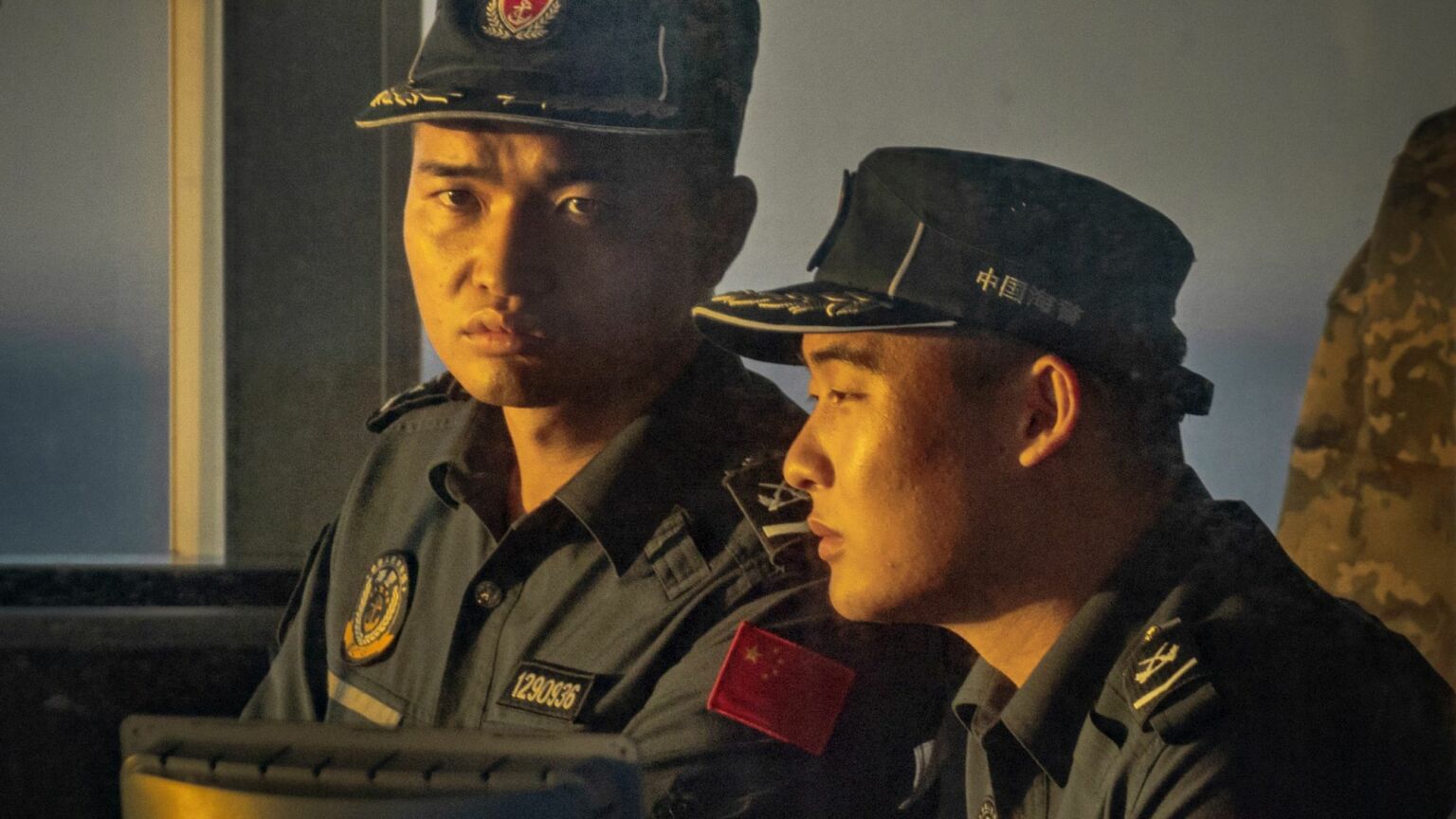Could the Philippines be the spark for the next global conflict?
A row over a tiny Filipino island in the South China Sea has ramped up tensions between the US and China.

Want to read spiked ad-free? Become a spiked supporter.
Since the late 1990s, China has attempted to wrestle control of the Second Thomas Shoal from the Philippines. This small, uninhabited reef is 120 miles from Filipino shores and a very long way from China. Yet it has become a focal point for mounting tensions throughout south-east Asia.
In 1999, the Philippines deliberately marooned an old ship – the Sierra Madre – on the Second Thomas Shoal, in an attempt to establish a semi-permanent military base and protect the reef from Chinese meddling. Ever since, Beijing has overseen a long guerilla campaign to seize the island. In 2013, it dispatched a navy vessel and paramilitary ships to the area. In 2014, it blocked Manila’s efforts to resupply the Madre. Just last month, right next to the Second Thomas Shoal, China fired a water cannon at a Filipino resupply vessel, forcing it to collide with a Chinese boat.
This conflict goes far beyond one uninhabited reef. The mounting tensions reflect an alarming pattern of Chinese aggression over disputed territories in the South and East China seas.
The stakes here are high. If Chinese ships escalate from water cannon to live fire, a senior US official warned that Beijing could face ‘serious blowback’ from the US. Indeed, one American expert on the Indo-Pacific warns that ‘the greatest risk of a direct US-China military confrontation today centres on the Second Thomas Shoal’. Given the rising tensions between the US and China over Taiwan, this is clearly a big deal.
Unsurprisingly, some East Asian powers are becoming more vocal in their efforts to counter China’s power projection. This month, Fumio Kishida became the first Japanese prime minister to address a joint session of the US Congress in almost a decade. In meeting with President Biden, Kishida sought a complete upgrade to the US-Japan military alliance and enhanced cooperation in militarily sensitive industries, such as semiconductor chips and artificial intelligence. Most importantly, this joint session was followed by a trilateral summit between Biden, Kishida and Filipino president Ferdinand Marcos Jr. This has led to speculation of a new ‘tripartite security pact’ between the US, Japan and the Philippines.
All this is manna from heaven for Biden. With the 2024 presidential election mere months away, he has been able to present himself as talking tough on the international stage. He can impress upon Europe that it is Uncle Sam, not Brussels, that leads in East Asia. He can also convey to America’s fractious Asian allies that they should prefer the prospect of a second Biden term, rather than a return of the capricious Donald Trump.
These developments also complement Biden’s ambition to make the US a major geopolitical power in south-east Asia – an ambition set in motion by his Democratic predecessors. In 1993, anxious about Japanese competition, then president Bill Clinton travelled to Tokyo to announce the advent of ‘a tripolar world, driven by the Americas, by Europe and by Asia’. Similarly, in 2011, fuelled by anxieties about the rise of China, President Barack Obama went further and famously announced his ‘pivot to Asia’. Continuing this shift, Biden’s top geopolitical focus is not Palestine or Putin, but the ‘Indo-Pacific’. Today, just over half of all US troops serving abroad are stationed in Japan or Korea.
As the US turns its attention to the Philippines, so should the rest of the world. Volatile south-east Asia might be one wrong move away from an explosive confrontation.
James Woudhuysen is visiting professor of forecasting and innovation at London South Bank University.
Picture by: Getty.
Who funds spiked? You do
We are funded by you. And in this era of cancel culture and advertiser boycotts, we rely on your donations more than ever. Seventy per cent of our revenue comes from our readers’ donations – the vast majority giving just £5 per month. If you make a regular donation – of £5 a month or £50 a year – you can become a and enjoy:
–Ad-free reading
–Exclusive events
–Access to our comments section
It’s the best way to keep spiked going – and growing. Thank you!








Comments
Want to join the conversation?
Only spiked supporters and patrons, who donate regularly to us, can comment on our articles.